Books by Massimiliano Guido

The thesis examines the whole artistic output of Paolo Conte, from 1974 to 2007, insisting on the... more The thesis examines the whole artistic output of Paolo Conte, from 1974 to 2007, insisting on the relationship between poetry and music. Through a metric and textual analysis first, then a discussion of music and orchestration, two distinct narrative layers emerge: one related to the text, the other expressed by the music. Both of them are mingled in describing the complex approach of Conte to the Italian language and to the composition and performance of his music. The results are evaluated against the background of the literary world of the second Novecento in Italy.
The key elements, developed throughout the dissertation are: the importance of the word as an emanation of the musical idea; the extreme poetical force of Conte’s vocal character (defined by Roland Barthes as the grain of the voice); the relationship between voice and instruments in the construction of musical and poetic meaning.
The first part develops the importance of Conte’s voice in the musical rendering of his texts. The voice is analyzed with reference to its phonetic phenomena, and compared to a gallery of other singers, quoted by Conte as particularly close to his sensitivity. It is not only the voice, but also the intricate web that Conte builds with the instruments that is essential to the poetic, starting with the instruments played by Conte himself: the piano and the kazoo. His performance technique is directly linked to Conte’s emotional response to the song, and to his voice.
A complete performance, for which an official video is available, (Arena Verona, 2005) has been studied, providing an analysis of the relationship between every single song, the movements on stage of the musicians, Conte’s mimics, lights and choreography. What comes out has been defined as the “spettacolarità della voce”, i.e. the scenic impact of many expressive and musical choices by Conte.
The second part of the dissertation examines the choices and the technique of orchestration. Original material from interviews with Conte and Antonio Marangolo are combined with other sources. The result is a critical history of the several bands used by Conte during his thirty years on stage, with an explanation for the changes in timbre.
Also rhythm is considered essential for the rendering of the poetic text, discussing the different components of his personal approach (classical and jazz). Swing is introduced in analyzing several examples from Conte, chosen above all in his middle period, when he was working with jazz musicians. Rhythm is expressive also when coming to dance: valzer, tango, milonga, and habanera.
Orchestration is one of the most important parameters for transmitting the poetic value of the song. This process has been called “ri-vestizione strumentale” (instrumental re-dressing), following a statement by Conte. The definition is broader than re- orchestration, and indicates a sort of carnal approach of Conte to his music. Analyzing several songs the principles and the ideas of such a technique are highlighted. What has ben exposed so far, is confirmed also by the synchronic reading of an entire album, Paris Milonga. The web of sonic analogies characterizing the whole collection is investigated here. This phenomenon is called allusive intertextuality, demonstrating how Conte hides in his orchestrations many elements that connect poetically related songs to each other.
Papers by Massimiliano Guido
The Fryderyk Chopin Institute, 2019

on fedele fenaroli s pedagogy an update eighteenth. studies in historical improvisation from cant... more on fedele fenaroli s pedagogy an update eighteenth. studies in historical improvisation from cantare super. historical super for sale shop military collectibles. discantare super planum cantum new approaches to vocal. partimento teaching according to francesco durante diva. international school of improvisation 2020. studies in historical improvisation cantare super librum. pdf giuseppe fiorentino contrapunto and fabordón. termsvector search result for improvisation. studies in historical improvisation from cantare super. studies in historical improvisation from cantare super. studies in historical improvisation from cantare super. gs amis conference 2017 abstracts. pdf the art of partimento download full pdf book download. improvisation and social aesthetics by geina born eric. partimento. r vo y a lo m u us i c a lc a s sho c i aet i o rn. studies in historical improvisation from cantare super. historical improvisation bibliography. pdf bass improvisation download full pdf book do...
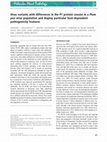
Philomusica on-line, 2005
Subisolates segregated from an M-type Plum pox virus (PPV) isolate, PPV-PS, differ widely in path... more Subisolates segregated from an M-type Plum pox virus (PPV) isolate, PPV-PS, differ widely in pathogenicity despite their high degree of sequence similarity. A single amino acid substitution, K109E, in the helper component proteinase (HCPro) protein of PPV caused a significant enhancement of symptom severity in herbaceous hosts, and notably modified virus infectivity in peach seedlings. The presence of this substitution in certain subisolates that induced mild symptoms in herbaceous hosts and did not infect peach seedlings suggested the existence of uncharacterized attenuating factors in these subisolates. In this study, we show that two amino acid changes in the P1 protein are specifically associated with the mild pathogenicity exhibited by some PS subisolates. Site-directed mutagenesis studies demonstrated that both substitutions, W29R and V139E, but especially W29R, resulted in lower levels of virus accumulation and symptom severity in a woody host, Prunus persica. Furthermore, when W29R and V139E mutations were expressed concomitantly, PPV infectivity was completely abolished in this host. In contrast, the V139E substitution, but not W29R, was found to be responsible for symptom attenuation in herbaceous hosts. Deep sequencing analysis demonstrated that the W29R and V139E heterogeneities already existed in the original PPV-PS isolate before its segregation in different subisolates by local lesion cloning. These results highlight the potential complexity of potyviral populations and the relevance of the P1 protein of potyviruses in pathogenesis and viral adaptation to the host.
Music Theory Online, 2014
Philomusica on-line, 2012
Counterpoint, in the Seicento, was not a dead set of rules, but a living language used every day ... more Counterpoint, in the Seicento, was not a dead set of rules, but a living language used every day by learned musicians, refined singers, and keyboardists. The aspect that will be explored here is the learning process: how the treatises were read and learned at the keyboard. Evidence is collected from Girolamo Diruta’s Il Transilvano, where the short counterpoint rules have to be read in association with the other instructions in the treatise. I propose a reconstruction of a method of learning counterpoint, deriving theoretical principles from practical and physical situations such as fingering and hand position movements. This practice has roots in ‘counterpoint alla mente’, which was at the basis of musical instruction.
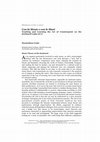
Philomusica on-line, 2012
Music Theory at the Keyboard s an organist particularly involved in early music, as well a musico... more Music Theory at the Keyboard s an organist particularly involved in early music, as well a musicologist dealing with the late Renaissance and early Baroque, I have had to confront my forebears' competence many times. Opening the treatises by Diruta and Banchieri, browsing the works of Trabaci, Frescobaldi, Pasquini, and reading the lines by Zarlino, one gets fascinated by a cultural world in which composing and playing the keyboard were two intimately related activities. This link has faded in our time, to the point that in our schools music theory and counterpoint are only tenuously connected to the practical act of singing or playing the music. That chasm not only creates an artificial separation in the way of learning, but it also limits the overall understanding of a musical culture. But historically informed improvisation, especially for keyboard instrumentalists, has re-entered the curricula in several places in Europe and North America. Excellent musicians are trained in recreating the same finesse of their predecessors. As it was in the past, this revival too is pretty much based on 'secret knowledge' transmitted from teacher to student during classes. This learning method is indispensable to success: improvising according to strict stylistic rules is like learning a second language, grammar, syntax, vocabulary, and so on. It requires a lot of time and a lot of practical and mental exercise. Nevertheless the risk is that this art may be understood as a mere practical technique, belonging only to the realm of performance practice. The aim of my post-doctoral research project at Pavia University (2008-10) has been precisely to investigate the intimate relationship between music theory and performance, through improvisation. My efforts, supported by evidence collected among distinguished colleagues from several countries, have been to cast a bridge over that chasm, to let musicologists, music theorists and performers interested in approaching improvisation find research materials ready to be used and investigated. The large scope of the field suggested looking for a team of specialists who could bring their different competence A

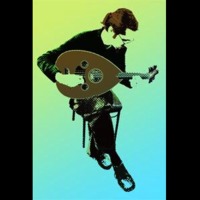


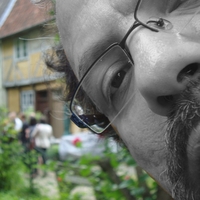

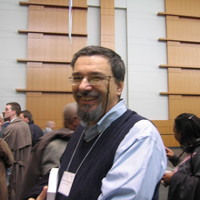
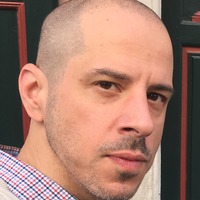


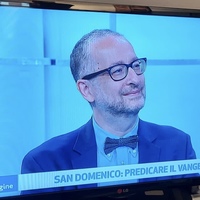
Uploads
Books by Massimiliano Guido
The key elements, developed throughout the dissertation are: the importance of the word as an emanation of the musical idea; the extreme poetical force of Conte’s vocal character (defined by Roland Barthes as the grain of the voice); the relationship between voice and instruments in the construction of musical and poetic meaning.
The first part develops the importance of Conte’s voice in the musical rendering of his texts. The voice is analyzed with reference to its phonetic phenomena, and compared to a gallery of other singers, quoted by Conte as particularly close to his sensitivity. It is not only the voice, but also the intricate web that Conte builds with the instruments that is essential to the poetic, starting with the instruments played by Conte himself: the piano and the kazoo. His performance technique is directly linked to Conte’s emotional response to the song, and to his voice.
A complete performance, for which an official video is available, (Arena Verona, 2005) has been studied, providing an analysis of the relationship between every single song, the movements on stage of the musicians, Conte’s mimics, lights and choreography. What comes out has been defined as the “spettacolarità della voce”, i.e. the scenic impact of many expressive and musical choices by Conte.
The second part of the dissertation examines the choices and the technique of orchestration. Original material from interviews with Conte and Antonio Marangolo are combined with other sources. The result is a critical history of the several bands used by Conte during his thirty years on stage, with an explanation for the changes in timbre.
Also rhythm is considered essential for the rendering of the poetic text, discussing the different components of his personal approach (classical and jazz). Swing is introduced in analyzing several examples from Conte, chosen above all in his middle period, when he was working with jazz musicians. Rhythm is expressive also when coming to dance: valzer, tango, milonga, and habanera.
Orchestration is one of the most important parameters for transmitting the poetic value of the song. This process has been called “ri-vestizione strumentale” (instrumental re-dressing), following a statement by Conte. The definition is broader than re- orchestration, and indicates a sort of carnal approach of Conte to his music. Analyzing several songs the principles and the ideas of such a technique are highlighted. What has ben exposed so far, is confirmed also by the synchronic reading of an entire album, Paris Milonga. The web of sonic analogies characterizing the whole collection is investigated here. This phenomenon is called allusive intertextuality, demonstrating how Conte hides in his orchestrations many elements that connect poetically related songs to each other.
Papers by Massimiliano Guido
The key elements, developed throughout the dissertation are: the importance of the word as an emanation of the musical idea; the extreme poetical force of Conte’s vocal character (defined by Roland Barthes as the grain of the voice); the relationship between voice and instruments in the construction of musical and poetic meaning.
The first part develops the importance of Conte’s voice in the musical rendering of his texts. The voice is analyzed with reference to its phonetic phenomena, and compared to a gallery of other singers, quoted by Conte as particularly close to his sensitivity. It is not only the voice, but also the intricate web that Conte builds with the instruments that is essential to the poetic, starting with the instruments played by Conte himself: the piano and the kazoo. His performance technique is directly linked to Conte’s emotional response to the song, and to his voice.
A complete performance, for which an official video is available, (Arena Verona, 2005) has been studied, providing an analysis of the relationship between every single song, the movements on stage of the musicians, Conte’s mimics, lights and choreography. What comes out has been defined as the “spettacolarità della voce”, i.e. the scenic impact of many expressive and musical choices by Conte.
The second part of the dissertation examines the choices and the technique of orchestration. Original material from interviews with Conte and Antonio Marangolo are combined with other sources. The result is a critical history of the several bands used by Conte during his thirty years on stage, with an explanation for the changes in timbre.
Also rhythm is considered essential for the rendering of the poetic text, discussing the different components of his personal approach (classical and jazz). Swing is introduced in analyzing several examples from Conte, chosen above all in his middle period, when he was working with jazz musicians. Rhythm is expressive also when coming to dance: valzer, tango, milonga, and habanera.
Orchestration is one of the most important parameters for transmitting the poetic value of the song. This process has been called “ri-vestizione strumentale” (instrumental re-dressing), following a statement by Conte. The definition is broader than re- orchestration, and indicates a sort of carnal approach of Conte to his music. Analyzing several songs the principles and the ideas of such a technique are highlighted. What has ben exposed so far, is confirmed also by the synchronic reading of an entire album, Paris Milonga. The web of sonic analogies characterizing the whole collection is investigated here. This phenomenon is called allusive intertextuality, demonstrating how Conte hides in his orchestrations many elements that connect poetically related songs to each other.